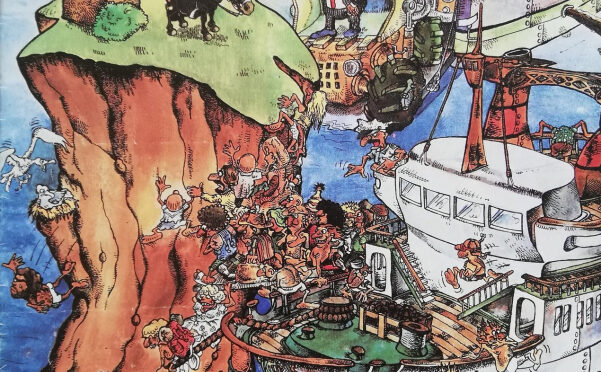Views: 361
Effects linked to the pandemic have provoked a sudden change in the type of tourism. Fewer people require an all-inclusive holiday at a hotel with swimming pool, now there are more who come independently wanting to go to the coves, squares and restaurants. That is roughly how it has been and enough has been talked about it. However, let us profit by analysing the matter further.
The summer of 2021 cannot be remembered only for being the second year without village fiestas. In Menorca, it will be remembered as the season when the beaches were crowded so early (by 7.30 in the morning), when 500 vehicles were disembarked from the mainland daily, where boats were crammed in across the horizon, when it was necessary to make table reservations days in advance.
It will also be remembered as the year in which people of all ideologies and determinations understood the need to overcome the problem of overcapacity and the requirement of different parameters. For many years, Menorca has tried to combat crowding, because it has been shown repeatedly that this is not the model that people linked to the island want. So, when crowding reaches record levels, alarms are set off.
The huge addition of people that come to the island in July and August cannot be corrected if we do not try to handle the numbers of arrivals. For that we would do well to look at the types of accommodation available to the visitors.
Following the latest data from the local governing council (Consell Insular), Menorca has the legal tourist capacity for 81,045 people. Three typical, large examples stand out. Coastal apartments represent 24.8% of the total capacity. Hotels and apartment hotels (leaving out the 5 starred ones) represent 31.9%. Self-catering rental properties for tourists represent 34.4%. This shows that these three examples represent more than 90%. The rest is a combination of various others (agro tourisms, town hotels, hostals, etc).
Referring to the first two (apartments and coastal hotels), they still maintain the same capacity availability as for when they were designed in the seventies and eighties and the tourist ratio (the square metre of building for each tourist) is still the same for nearly everything as for that era. For example, the Son Bou hotels are presenting their project of “modernisation” that is keeping the heights of their buildings but not reducing the number of tourist places.
As is known, these establishments require a type of mass tourism. They are often linked to all-inclusive holidays. They present as an advantage the provision of bus transfers and not having to leave the hotel. However, they need low cost planes and are an economic expense to the island that many people argue is significant.
The increase on the price of fuel in the next few years puts an uncertain future on this model. If the properties are not converted to the highest standards, they can end up with an unsatisfactory tourism with which it is difficult to coexist. The rental of properties to tourists represents the largest increase in accommodation capacity that has happened in the last few years, despite the intentions not to increase the construction of new tourist buildings. Many properties that functioned as homes are now turned into places for visitors.
That is the type of accommodation that is prone to having more people than expected (such as groups of young people partying). It is one of the reasons for the rise in house prices and it produces other large problems: despite the number of legal rentals on offer, there are many illegal ones.
In 2019 there were about 250,000 people at the peak of August. That was 30,000 more people than were registered and in recognised tourist places. Many of them were in undeclared tourist lets.
Inspection and effective penalties, requirements for parameters of quality in modernizing old hotels and apartments and the establishment of a pool of tourist places (where to gain one new one, three old ones must be deregistered), are measures that can give solutions to complaints. If carried out they would reduce the number of summer tourists, preserve the good image of the island and increase its economic profitability.
We should not forget that there are other contingencies such as drinking water, rubbish collection, the capacity of sewerage treatment plants, as well as atmospheric emissions to consider. These increase conflicts because we do not make a final decision for imposing necessary limitations. We should now focus the debate on concrete measures.
On another day, let us talk about the number of vehicles and boats. Two cases where there is sufficient data to show the capacity overload.
(Article published by Miquel Camps, GOB coordinator of land policy, in the daily Menorca newspaper on 6 September 2021.)

